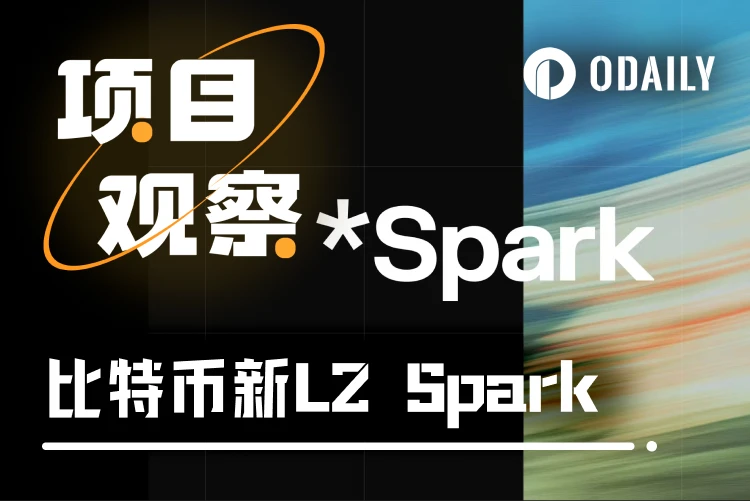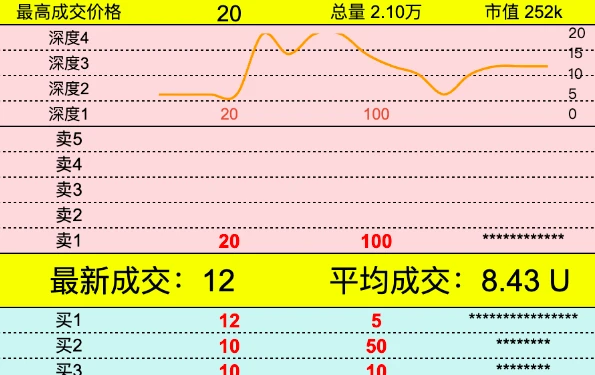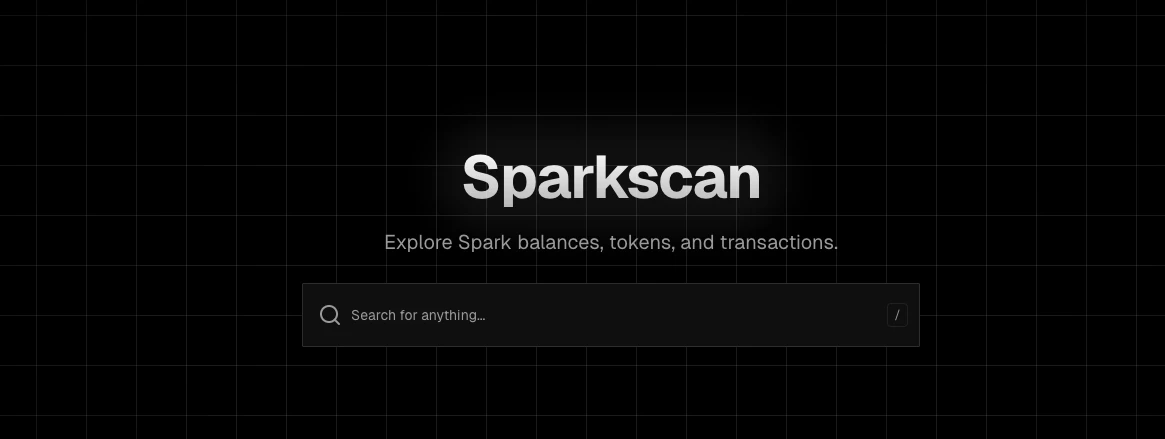Original | Odaily Planet Daily ( @OdailyChina )
Author: Golem ( @web3_golem )

In the Bitcoin ecosystem, it is not difficult to create a new asset issuance protocol. What is difficult is to have a community and project team continue to do things around the protocol. Recently, the Bitcoin ecosystem has set off a wave of new protocol enthusiasm. Many anonymous projects have shown their creativity to the market, but in reality most of them are just old wine in new bottles with no infrastructure, no development, and no one to take over.
But in this dark forest, there are still serious teams. On May 20, the well-known Bitcoin ecological trading market Magic Eden announced its integration with the new Bitcoin L2 Spark, and will jointly hold an event on May 26. Spark is a new type of Bitcoin expansion solution. On April 29, the project officially launched the mainnet beta version. On May 8, the first LRC 20 token FSPK was born. Although the minting experience was not good, it still caused FOMO in the Bitcoin ecological community. The current over-the-counter transaction price of the first FSPK is 12-20 US dollars per piece (1 piece = 0.001), and the cost is about 2 US dollars per piece. The price has at least doubled by 6 times.

The cooperation between Magic Eden and Spark may also mean that the LRC 20 on-chain trading market will be launched soon. In addition to Magic Eden, Spark has also cooperated with multiple projects, and the prototype of the ecosystem has emerged. At the same time, it is also supported by the well-known VC a16z. In this article, Odaily Planet Daily will briefly introduce Spark, the currently issued LRC 20 tokens and its ecological projects.
Spark: Bitcoin-native L2 built for payments and settlements
Spark claims to be a Bitcoin native L2 built for payment and settlement, but in fact Spark uses an off-chain expansion solution, is not an EVM-like chain or Rollup, does not support smart contracts, and does not have a virtual machine. Therefore, Spark supports users to achieve instant, low-cost and unlimited self-custodial transactions of Bitcoin and other tokens (including stablecoins) off-chain, and has native interoperability with the Lightning Network, and can send and receive tokens through the Lightning Network.
For Bitcoin, whether it is an on-chain or off-chain expansion solution, what users care most about is the security of Bitcoin, that is, whether Bitcoin that enters L2 can be withdrawn safely and unimpeded. The Spark network currently has only two operators, namely the parent company Lightspark and Flashnet (official instructions will add more operators in the future), so in theory, for all transactions on Spark, at least one operator and user must authorize together to succeed. Such a design naturally brings risks. If both operators are down, the security of user funds will be threatened.
But even as an off-chain expansion solution, Spark still has the characteristics of non-custodial and Bitcoin-native. The core of Spark is the use of a shared signature protocol based on Bitcoin. It runs in the form of a distributed ledger without an additional consensus mechanism. Users Bitcoin deposits will be directly mapped to Spark without any bridge or packaging. At the same time, users funds are always in a non-custodial state. Even if the Spark operator disappears, attempts to censor or refuses to cooperate, users can still force unilateral withdrawals to the Bitcoin main network, ensuring the safety of funds.
Sparks parent company is Lightspark , and its founder is David Marcus , who previously served as president of PayPal and vice president of messaging products at Facebook. He was also invited to attend the first crypto summit held at the White House on March 8. In terms of financing, on May 13, 2022, Lightspark completed a round A financing of over US$170 million, led by a16z and Paradigm, with participation from Coatue Management, Ribbit Capital, Thrive Capital, Felix Capital, Matrix Partners, and Zeev Ventures. The financing lineup is quite luxurious.
On April 29, Spark launched a public beta version of its mainnet, with core functions such as sending and receiving Bitcoin, creating tokens (such as stablecoins), and lightning interoperability fully operational, and developers can also use Sparks SDK to build applications.
In terms of network fees, users are charged 0 fees for transactions in the Spark network. Depositing or withdrawing Bitcoin to Spark requires paying a certain Bitcoin chain fee (a certain fee will be charged after 6-12 months), and depositing Bitcoin from Spark to the Lightning Network requires paying a 0.25% fee and routing fee.
Although the official statement is that Spark has no tokens and will not have any airdrop or token TGE plans, LRC 20 was fully explored by the market shortly after the Spark mainnet beta was released.
Spark native token protocol LRC 20
LRC 20 is the native token protocol launched by Spark in the summer of 2024. It is also compatible with the Bitcoin mainnet and the Lightning Network, but it is still under development. Currently, LRC 20 still only supports running on the Spark network.
LRC 20 uses Bitcoin as the settlement layer and Spark as the execution layer. Anyone can issue LRC 20 tokens, but before issuing, users need to broadcast a transaction on the mainnet, embed the tokens identifier and metadata (name, supply, decimals) into the OP_RETURN output, and after the broadcast is successful, the token can be minted on Spark.
LRC 20 does not support the fair issuance model. After the token is issued, only the original issuing wallet can mint it. Other addresses can only obtain tokens through airdrops or distribution by Dev. At the same time, LRC 20 also supports freezing and destruction operations. The original issuing wallet can freeze the tokens on any address . The tokens held by the frozen address will be locked and cannot be received or sent unless the Dev unfreezes them; but the original issuing wallet can only destroy the tokens held by its own address, and the destruction is irreversible.
From the above characteristics, we can see that LRC 20 is indeed born for the issuance of stablecoins, giving the original issuing address greater power, but for other addresses holding tokens, if they do not give up the freezing power, there is also a hidden centralization crisis. However, in any case, there are already several LRC 20 tokens with strong consensus on the market, but because of the need to use computer terminals for casting and various operations of Dev in the early stage, the tokens are also somewhat confusing, which will be introduced below.
FSPK (ending in 8b93): the first LRC 20 token
Total number of tokens: 21
OTC price: 12-20 USD/piece
Public key: 02b1d59c286bb79b39d0b3f14dc2a532b1e97e5c32c6376caea41e0b8c39708b93
Release date: May 8
FSPK, whose public key ends with 8b93, is the first LRC 20 token, issued by @fspk_spark . The total amount of the token was originally 21 million, but because the project set the token supply incorrectly, the final total amount was 21 (the worst Dev in history), so the current number of FSPK (ending with 8b93) is 0.001 tokens, and the casting cost of a single FSPK is 0.000021 BTC, which is about 2 US dollars.
However, LRC 20 itself cannot be minted fairly, so the essence of the minting process is that users deposit money into the project wallet, and then it manually distributes tokens to users one by one (which is also hard work), earning a total of 0.441 BTC, equivalent to US$47,187.
Currently, the over-the-counter price of FSPK (ending in 8b93) is $12-20 per piece.
FSPKS: fix error in first FSPK (end of 8b93)
Total number of tokens: 21 million
OTC price: None
Public key: 029e4d50f931c170e100c1b7129e353cddd69c8ae50bf274e7a68b05144ef8b55e
Release date: May 12
This is also a token issued by @fspk_spark . The project owner also realized that the total amount of the first FSPK of 21 is too small. Therefore, in order to better support the subsequent DEX AMM or Spark DEX swap, on May 21, the project owner announced the issuance of a new token FSPKS to replace the first FSPK. The new FSPKS token will be airdropped to FSPK holders at a ratio of 1,000 tokens per token. At the same time, the project owner stated that the old FSPK is no longer valid and will not appear in subsequent AMMs.
FSPK (end of 6c82)
Total number of tokens: 21 million
OTC price: 4-10 USD/sheet (1 sheet = 1000 pieces)
Public key: 0374f5629ac68dbdf9600cc14c763b8be9f1ebb198b3c568b47f9811efbcf56c82
Release date: May 11
Because players encountered too many difficulties in playing the first FSPK (ending with 8b93), such as transactions that could not be confirmed and tokens that could not be received, the total amount of the first (ending with 8b93) was only 21, so the @Flashspark_ team airdropped FSPK (ending with 6c82 ) to the first 21,000 users who transferred the first FSPK (ending with 8b93 ) in the order of transaction time, including users with confirmed and unconfirmed transactions. The current over-the-counter transaction price is 4-10 US dollars per piece, but its consensus is weak.
SAT
Total number of tokens: 210 trillion
OTC price: None
Public key: 02757529fa69b70e55cee583c03d58936c39fff134b83808745db1ff41c1603bdb
Release date: May 11
SAT is also airdropped by an anonymous Dev to all addresses that minted the first FSPK (ending with 8b93). Because it inherits the tradition of huge total amount of SAT and has 0 cost, it will also attract community attention, but it is not currently priced over the counter.
SNOW
Total number of tokens: 21 million
OTC price: $19/piece
Public key: 0377abadfbab8cc1fd7382fab87835ab062fd72c3ae7662fa6b579210fca16cd59
Release date: May 17
SNOW was launched by Sparksat , a Spark ecosystem project. It is the first LRC 20 token endorsed by a legitimate project, so the community has a high degree of recognition for it. Currently, its OTC transaction price is $19 per piece, and the cost is only $1 (this fee is also charged by the project party). The current price has increased 19 times.
Early ecosystem projects and tools
The biggest difference between Spark and other short-lived new protocols is that, although it is still in its early stages, there are some determined builders in its ecosystem, which gives it a sense of déjà vu of the early BRC20 ecosystem. In addition to working with Magic Eden, Spark has also established cooperation with the stablecoin issuance protocol Brale , which plans to launch stablecoins in Bitcoin; and has established cooperation with the Web3 infrastructure Privy to help project parties build dApps on Bitcoin.
The following is an introduction to the early projects and tools in the Spark ecosystem:
sparkscan
sparkscan is a browser for the Spark network. Users can enter the Spark network address on the website to view token balances, transaction records, etc. They can also enter the token public key to view the number of token holders, total supply, transaction history, etc.

SparkSat
SparkSat is the first fully functional web wallet tool on the Spark protocol. It is also the project owner of the LRC 20 token SNOW, but is not officially operated by Spark. By importing mnemonics into SparkSat, users can clearly view their assets, and can also directly deposit and withdraw Bitcoin mainnet and trade on the Spark network and lightning network through the SparkSat front end. You can also use the tool directly to issue LRC 20 tokens and view all LRC 20 tokens in one stop, which can be called the Unisat of the Spark protocol.

Flashnet
Flashnet is the only operator of the Spark protocol and the developer of the Spark browser sparkscan. On February 4, 2025, Flashnet completed a $4.5 million seed round of financing, with UTXO Management, Accomplice, Soma Capital and others participating.
Flashnet is committed to building a permissionless, non-custodial, Bitcoin-native DEX, and may also launch a Spark ecosystem DEX in the future. At the same time, it has cooperated with the stablecoin issuance protocol brale to launch the Bitcoin stablecoin USDB.










